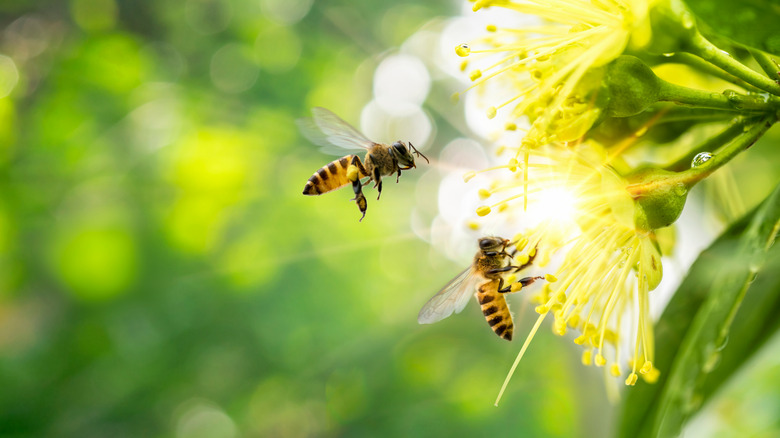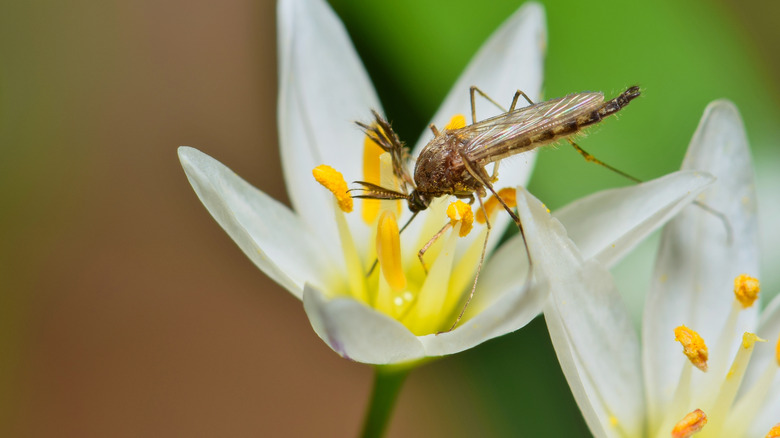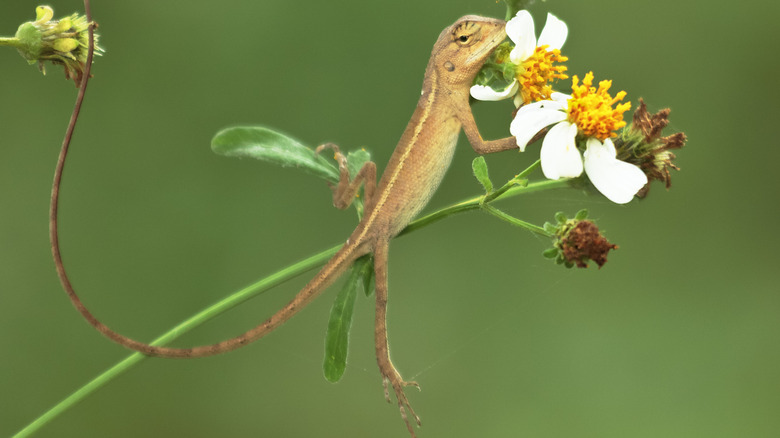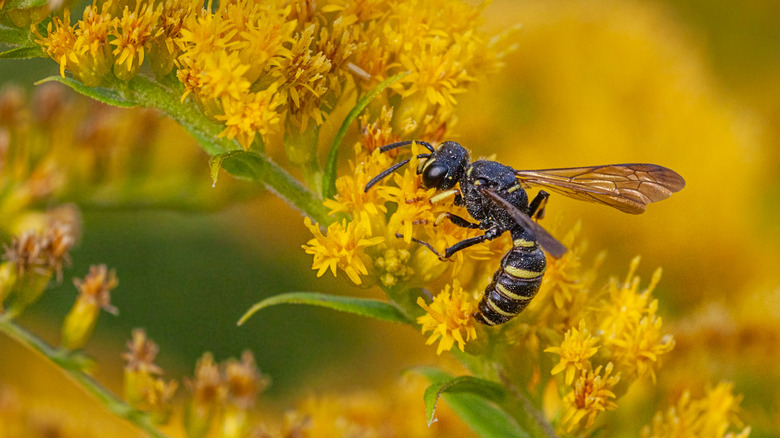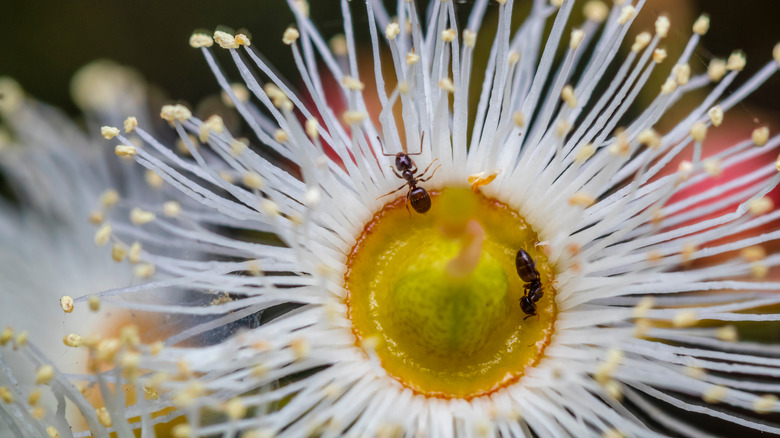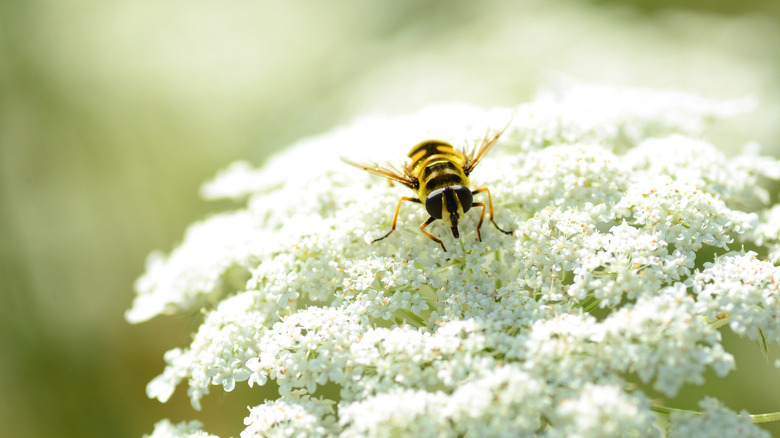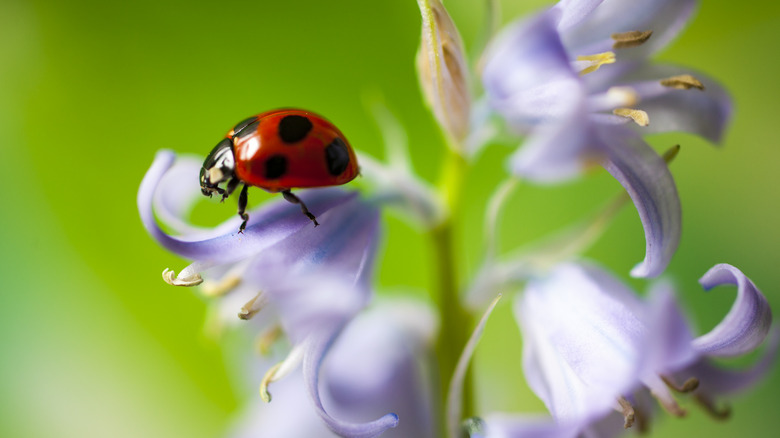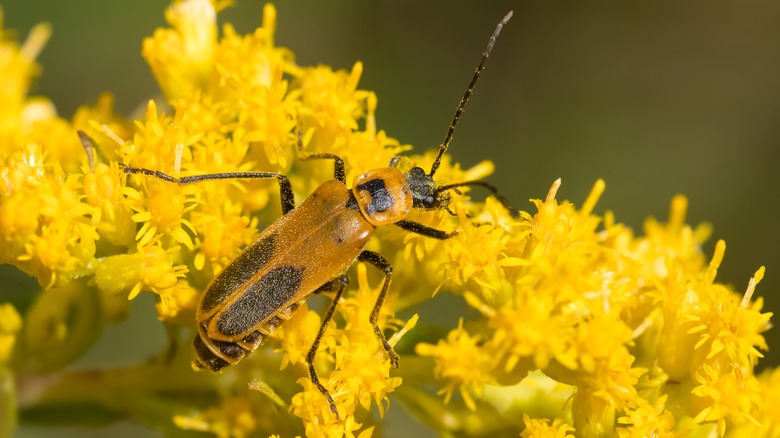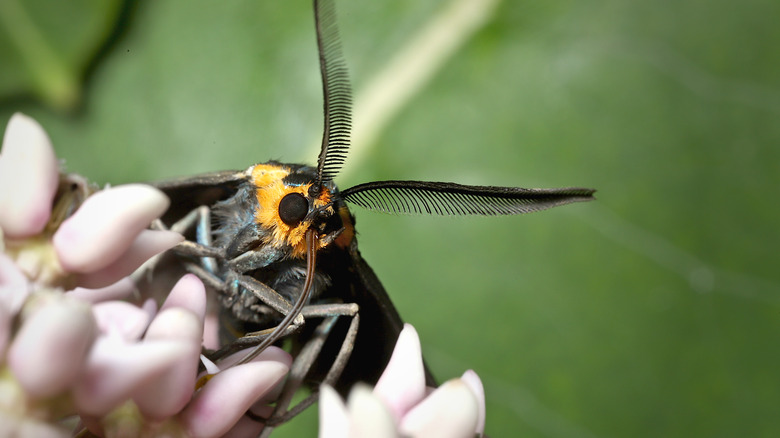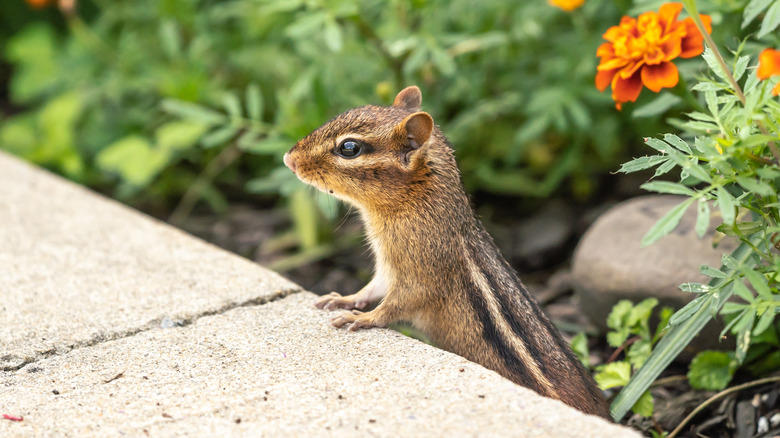Don't Mistake These Lesser-Known Garden Pollinators For Pests
Having beautiful flowering plants in your garden is a great way to bring some color and life to your space, but without a bit of extra help, many of these plants won't be able to develop properly and continue in their life cycle. According to a study originally published in Oikos, 87.5% of flowering plant species use the assistance of insects and animals to pollinate, a process that allows them to produce fruit. This fruit is obviously an essential part of the diet of humans, but it can also be important to nearby wildlife and help to spread the plant's seeds, ensuring there will be a lush and functional ecosystem in the area for years to come.
Most people know the basic pollinators like hummingbirds, bees, butterflies, but these insects and animals aren't the only creatures that can help out in the garden. In many cases, they are the most popular simply because they're seen as harmless or even cute — who hasn't enjoyed watching a colorful butterfly land on a petal of a flower or worked to attract hummingbirds to their yard? However, there are plenty of other creatures that are more easily mistaken as pests, either because they're just naturally less visually appealing or tend to suffer from bad PR. After training your eye a bit, you'll be able to better differentiate between the visitors to your garden that are there to help versus those that will cause harm.
1. Mosquitos
Mosquitos are one of the most widely hated bugs out there, thanks to the itchy bites they cause, but did you know that only female mosquitoes feed on blood? Male mosquitoes, on the other hand, rely primarily on nectar as a food source, meaning they will often act as pollinators. Of course, it's necessary to balance the risk and reward when it comes to banishing mosquitoes from your yard or allowing them to hang around. At least you can rest assured that, if you're dealing with a mosquito problem, they serve more of a purpose in the global ecosystem than simply annoying you.
2. Lizards
Lizards aren't the most common pollinators out there because it's much easier to access nectar and transport pollen if you have wings, but there are some environments where these little reptiles are doing some serious heavy lifting, especially where other common pollinators have died out. It's most common to find lizards acting as pollinators in island environments, so if you live somewhere more tropical or isolated, don't be surprised if you notice a sprinkle of bright yellow pollen adorning the face of these creatures as they scurry around your garden and interact with the local flora.
3. Wasps
Bees have received quite a bit of love lately as many conservationists are taking a more focused approach to help decrease harm to pollinator populations, but their cousins, wasps, haven't gotten the same treatment. Instead, many people are still afraid of these creatures, especially when they feel they might be on the receiving end of a painful sting. As it turns out, however, 98.5% of all wasp species don't actually sting, and, as a bonus, they also control the populations of other pests that can cause damage to plants. Add on the fact that they're also pollinators, and you have an insect that's all-around great for the environment.
4. Ants
Ants might be known more for their annoying habit of swarming around food or creating piles in the yard that are necessary to dodge if you don't want a foot covered in bites, but many species are actually important pollinators. It makes sense — ants are attracted to sugar in food and crumbs that collect on the floor, so why wouldn't they also naturally find their way to similarly sweet flower nectar? While they don't do quite as much work as some other pollinators, they can still help out, especially in areas where hummingbirds and butterflies aren't as easy to find.
5. Flower flies
Flower flies, also commonly referred to as hoverflies, are frequently confused with bees thanks to their distinctive yellow and black markings and similar body shape. These buzzing insects, however, have evolved to mimic bees so they have a bit of extra protection from predators and can more easily blend in to successfully infiltrate their nests and feed on dead bees. They're not capable of stinging like their coloring suggests, but they do function as pollinators and even help to control the population of other pests like aphids and scales that might be hanging around your precious blooms.
6. Ladybugs
To most experienced gardeners, ladybugs are already a welcome sight. They're some of the best bugs to have around if you are looking for eco-friendly ways to keep unwanted pests out of your garden, and they're even seen as good luck if you're superstitious. One of their less discussed positive characteristics, however, is the fact that they can also help out when it comes to pollinating flowers. Their diet includes both aphids and flower nectar, so it's not uncommon to find them transferring pollen from bloom to bloom as they feed and go about their typical activities in your garden.
7. Goldenrod soldier beetles
Goldenrod soldier beetles, also known as Pennsylvania leatherwings, are fairly large beetles with long, burnt orange colored wings and distinctive black markings, similar in look to a firefly without the glow. Their appearance might be a bit intimidating at first glance, but they're a welcome presence in the garden. They eat aphids, don't sting, and are frequently found transferring pollen from flower to flower, especially their namesake, goldenrods. You're more likely to notice them around the garden in late summer, but you can rest assured that they're not visiting to cause any harm to you or your plants.
8. Moths
Butterflies are one of the big names in pollination, but moths don't seem to get as much recognition despite playing a similar role. This is likely because they simply aren't as visible. Moths are more commonly found flying around at night, so there are fewer opportunities to spot them stopping by your plants. Flowers that bloom at night, however, make this after-dark pollinator shift incredibly important, so if you want to attract moths to your space, consider planting some flowers that bloom later in the day, have light-colored petals, and emit fragrance, like jasmine, gardenia, and morning glory.
9. Small mammals
Depending on where you live, you likely see quite a few small mammals scurrying around your yard on a regular basis, whether that means squirrels, chipmunks, or even bats. While they're not the most commonly mentioned pollinators and do less work than the bugs and birds that rely on nectar for energy, these animals' regular activities can help to spread pollen and fertilize your plants. All that running around, digging, and searching for food will inevitably transfer some pollen from place to place, though it is important to deter or control the population if you notice these animals causing more harm than good to your garden or home.
